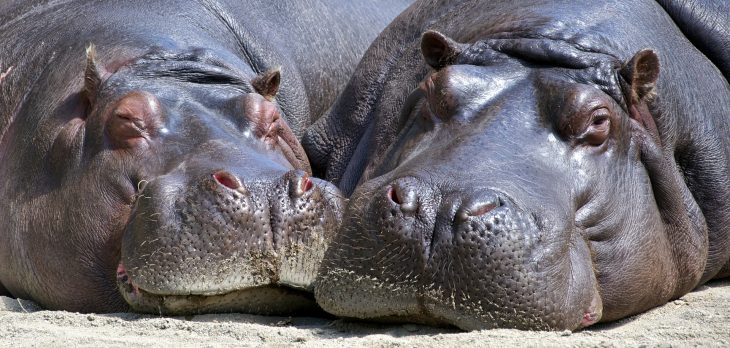
Only a few other animals enjoy as much popularity as the hippopotamus. In fact, when people start thinking about zoos or wild animals, hippos come to mind as quickly as lions, zebras, and giraffes, among others. That said, there’s a lot about hippopotamuses that don’t count as common knowledge. Learn all about them with these 50 Hippo facts!
- Male hippos typically have an average weight of around 1500 kg.
- In contrast, female hippos weigh less, typically around 1300 kg.
- Their bodies can also grow over 5 meters long, including the tail for up to 56 cm long.
- Hippos typically stand between 1.3 and 1.6 meters tall.
- Despite their size and weight, hippos can move surprisingly fast, with a top speed of around 30 kph.
- Hippos share a common ancestor with whales from around 60 million years ago.
- The hippos’ ancestral group, the anthracotheres, first evolved during the Eocene Epoch, between 56 to 34 million years ago.
- The anthracotheres split with the ancestral whales around 54 million years ago.
- They later migrated across Africa and Eurasia starting around 16 million years ago.
- The first recognizable hippos evolved around 8 million years ago.
- The other anthracotheres went extinct by the Pliocene Epoch, between 5 to 3 million years ago.
- Hippos in Eurasia went extinct between 50,000 to 16,000 years ago.
- The Greek historian Herodotus described hippos in his work The Histories in 440 BC.
- Roman naturalist, Pliny the Elder, did similarly in his work, Naturalis Historia, in 77 AD.
- Humans in Madagascar wiped out the hippos there within the last 1000 years.
- Hippos count as the world’s 3rd largest mammals, coming after elephants and rhinos.
- Hippos have closer relations to whales than to pigs and other similar mammals.
- Other close relatives of theirs include the American bison, dromedaries, and the giraffe.
- Not counting whales, hippos have the heaviest weight among their relatives.
- They currently have the “vulnerable” designation for conservation purposes.
Was this page helpful?
Our commitment to delivering trustworthy and engaging content is at the heart of what we do. Each fact on our site is contributed by real users like you, bringing a wealth of diverse insights and information. To ensure the highest standards of accuracy and reliability, our dedicated editors meticulously review each submission. This process guarantees that the facts we share are not only fascinating but also credible. Trust in our commitment to quality and authenticity as you explore and learn with us.


